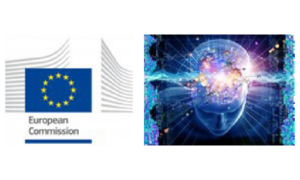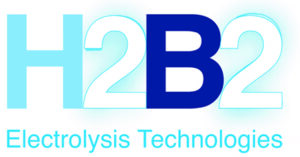|
|
Advancing supercapacitors with plasma-designed multifunctional hybrid materialsM-ERA Net COFUND (PCI2024-153451) PI: Juan Ramón Sánchez Valencia (Jun-2024/Jun-2027) |
Read more …
…
|
|
Sustainable Smart De-Icing by Surface Engineering of Acoustic Waves (SOUNDofICE)H2020-FET OPEN (Grant agreement 899352) PI: Ana I Borrás (Nov-2020/Apr-2025) |
Read more …
Icing on surfaces is commonplace in nature and industry and too often causes catastrophic events. SOUNDofICE ultimate goal is to overcome costly and environmentally harmful de-icing methods with a pioneering strategy based on the surface engineering of MHz Acoustic Waves for a smart and sustainable removal of ice. This technology encompasses the autonomous detection and low-energy-consuming removal of accreted ice on any material and geometry. For the first time, both detection and de-icing will share the same operating principle. The visionary research program covers the modeling of surface wave atom excitation of ice aggregates, integration of acoustic transducers on large areas, and the development of surface engineering solutions to stack micron-size interdigitated electrodes together with different layers providing efficient wave propagation, anti-icing capacity, and aging resistance. We will demonstrate that this de-icing strategy surpasses existing methods in performance, multifunctionality, and capacity of integration on industrially relevant substrates as validated with proof of concept devices suited for the aeronautic and wind power industries. SOUNDofICE high-risks will be confronted by a strongly interdisciplinary team from five academic centers covering both the fundamental and applied aspects. Two SMEs with first-hand experience in icing will be in charge of testing this technology and its future transfer to key EU players in aeronautics, renewable energy, and household appliances. An Advisory Board incorporating relevant companies will contribute to effective dissemination and benchmarking. The flexibility of the R&D plan, multidisciplinarity, and assistance of the AdB guarantee the success of this proposal, bringing up a unique opportunity for young academia leaders and SMEs from five different countries to strengthen the EU position on a high fundamental and technological impact field, just on the moment when the climate issues are of maxima importance.
|
|
AEMTRONFinancial source: H2B2 Electrolysis Technologies S.L. within IPCEI TECNOPROPIA project. PI: Francisco Yubero (Nov-2023/Jun-2026) |
 |
Triboelectric nanogenerators for raindrop renewable energy harvesting (DropEner) PIs: Ana I Borrás Martos, Carmen López Santos. (Dec-2022/Dec-2024) |
Read more…

DropEner aims to the development of rain panels, i.e. drop energy harvesters compatible with functioning under outdoor conditions, based on triboelectric nanogenerator (TENG) concepts and employing scalable and high yield production technologies. The project will demonstrate the application of an innovative concept recently patented by the NanotechOnSurfaces & Plasma Lab (CSIC-US)1 on the harvesting of the kinetic energy coming from liquid drops in the sudden and instantaneous contact with a triboelectric surface embedded in a capacitor-like architecture. Because of the parallelism with the architecture of a CCD image sensor pixel, we have entitled this invention as “Tixel”. Hence, this is the first TENG undoubtedly relaying on nano and microstructured architectures with the potential to generate high-density power by the implementation of Tixel arrays. Moreover, in a further step forward in the state-of-the-art in the exploitation of solid-liquid contact energy harvesters, DropEner pursues the development of durable and transparent Tixels. Such a challenge opens new scenarios for the exploitation of drop energy harvesters, among others, making them fully compatible with solar cells, including Silicon and Third Generation technologies (as Dye-Sensitized Solar Cells (DSCs) and Perovskite Solar Cells (PVs)).
|
Financial source: Ministerio de Ciencia e Innovación – Unión Europea Code: TED2021 – 130916B I00 Acronym: DropEner |
Research team: Antonio Jose Gines Arteaga (IMSE-CNM), Luis Alberto Angurel Lamban (INMA), Jose Cotrino Bautista (ICMS), Juan Pedro Espinos Manzorro (ICMS), Victor Joaquin Rico Gavira (ICMS), Jorge Gil Rostra (ICMS), Gildas Leger (IMSE-CNM), Xerman De La Fuente Leis (INMA), Ricardo Molina Mansilla (iQac), Agustin Rodriguez Gonzalez-Elipe (ICMS), Juan Ramon Sanchez Valencia (ICMS) y Angel Barranco Quero (ICMS). |
 |
NIR optofluidic device for liquid analysis (NIRFLOW) PI: Francisco Yubero (Dec-2021/Nov-2023) |
Read more …
NIRFLOW is a R+D+i Project for the realization of a Proof of Concept that is aimed to develop a pre-commercial prototype for the optical analysis in the near-infrared of fluids in flow conditions in relevant industrial environments. The project is based on several innovations not implemented in conventional NIR apparatus in the market so far. First, to substitute the conventional NIR optics mainly operated by spectrometers based on diffraction gratings or Fourier optics by a selection of the wavelength of analysis based on combinations of continuously variable short and long pass filters designed to tune a NIR passband (regarding center and width). Second, to develop an optofluidic cell, operated in transflectance mode, characterized by a tunable optical pathlength to optimize the info obtained by the different overtones of the characteristic molecules present in the fluid under analysis. This innovation will offer the possibility of more robust statistical analysis than conventional NIR spectroscopy operated with a single optical pathlength. Finally, the prototype will be developed within a microfluidic approach with an automated analysis concept, for its operation within a wireless remote technology. These three innovations make NIRFLOW a R&D+i project in which part of the knowledge and one of the developments done in a previous research project from the Spanish Plan Estatal (MAT2016-79866-R), partially protected by a patent claim, is aimed to be transferred to the society through the development of a pre-commercial prototype that showed ability of analysis in industrial operational environments, in particular, to follow the evolution of fermentation processes linked to wine production.
|
Financial source: Ministerio de Ciencia, Innovación y Universidades Code: PDC2021-121379-I00 Acronym: NIRFLOW |
Research team: Francisco Yubero, Jorge Gil-Rostra, Manuel Oliva, Victor Rico, Juan Pedro Espinós, R. Gonzalez, Javier Lloreda, Agustín Rodríguez Gonzalez-Elipe |
 |
PI: Alberto Palmero (Sept-2021/Aug-2024) |
Read more …
This project aims at studying atomic nucleation and thin film growth phenomena on piezoelectric surfaces under acoustic excitation in vacuum/plasma environments. Piezoelectric materials are characterized by a non-zero polarization vector when subjected to mechanical deformation and the reverse, a mechanical deformation when subjected to an electrical excitation. While piezoelectric surfaces under acoustic excitation are being used for numerous applications, e.g. raindrop sensors, touch-sensitive screens, or handling of liquids at the microscale, among others, a systematic survey of the literature reveals that only a seminal work published by the research team addresses the effect of acoustic waves in nucleation and growth processes in a plasma environment. There, we demonstrated a strong correlation between the features of the acoustic wave, the associated polarization pattern on the piezoelectric material and the structural features of a surface grown in the presence of a plasma, suggesting that this interaction can be employed as a new methodology to tailor the film nanostructure.
Two main sources of interaction are analyzed in this project: i) the mechanical influence of the propagating acoustic wave on the surface-induced mobility processes of ad-atoms, ii) the interaction between the polarization wave on the piezoelectric and the plasma electric field lines, that may affect the transport of charged species and their impingement on the piezoelectric material during growth. In this way, this project focusses on the description, development and understanding of a new phenomenology, and on the provision of the fundamental and theoretical framework to describe this interaction. It is expected that acoustic waves activation and its effect on surrounding plasmas represents a radically new procedure to activate thin film growth and nuclei formation and that the proposed methodology goes beyond any present paradigm in the field of surface physics, envisaging new routes of nanostructuration. Similarly, in the field of plasma dynamics, the possibility of modulating the plasma/surface interaction by acoustic waves is an option that may open alternative procedures for the operation of advanced microplasmas devices or flat plasma displays.
| Financial source: Ministerio de Ciencia e Innovación
Code: PID2020-112620GB |
Research team: Rafael Álvarez Molina, Víctor J. Rico Gavira, Agustín R. González-Elipe |
 |
PIs: Ángel Barranco Quero / Ana Isabel Borrás Martos (Jun-2020/May-2023) |
Read more …
AdFunc is a highly interdisciplinary project whose main objective is to achieve significant progress in two areas at the frontier of Materials Science: the development of multi-response sensors and light-activated energy systems. The common denominators of AdFunc are the intelligent design of complex architectures at the nanoscale and the development of laboratory scale demonstrators.
We are convinced that the project opens a window of opportunity for us to carry out research that can be classified into four areas: i) Applications and devices: We will develop the recently discovered tribotronic and piezotronic effects to manufacture self-powered sensor devices. With these materials, in combination with several advanced photonic sensing and spectro-electrochemical technologies, we will expand the efficiency, multiactuation and multiresponse of optofluidic adaptive systems. These systems, maintaining a common architecture, will present a differentiated response to diverse and complex real scenarios, which will be simulated in the project (environmental alterations such as spills, accidents, chemical or explosive threats).
Another fundamental aspect of the project are the photovoltaic devices, which will be optimized to be able to work in low light conditions, and mechanical energy collectors and devices that are capable of coupling light and movement to the activation of the water electrochemical decomposition. ii) Nanomaterials: AdFunc is a project where a team of specialists in the development of supported nanostructures by different technologies come together. This will allow us, for the first time, to implement a set of 3D nanoarchitectures (nanowires, nanotubes, core@shell) and the design of materials with controlled nanoporous structures (sculptural layers, nanochannels, porosity associated in several scales, porous optical multilayers, pioneering developments of metalloorganic networks (MOFs) in porous photonic structures) directly to the improvement of the active components of the project devices. Iii) Strategy: The project gives us the opportunity to work simultaneously on new synthetic routes, advanced characterization of materials and properties, integration of materials into devices, and this while simultaneously obtaining modeling and simulation information. iv) Perspective of scalability: In all cases, methods and techniques compatible with established industrial processes will be used, such as plasma and vacuum, typical of the optoelectronic and microelectronic industry, and synthesis processes in solution. Another interesting aspect is the possibility of introducing plastics and polymers to manufacture devices, which may allow the valorization of waste from the plastic industry, in an effort of circular economy in which researchers of the project are committed.
AdFunc is only possible thanks to the joint effort of a large number of researchers, mostly from ICMS-CSIC and the Pablo de Olavide University, which is completed by a group of researchers from other national and international institutions with complementary experience and interest. It is precisely the coordination of such a large number of specialists (25 doctors in the two subprojects) that allows us to propose the development of such a complete and ambitious set of activities.
|
Financial source: Miniesterio de Ciencia e Innovación Code: PID2019-110430GB-C21 Acronym: AdFunc |
Research team: José Cotrino Bautista, Victor J. Rico Gavira, Francisco Yubero Valencia, Juan Pedro Espinós Manzorro, Agustín R. González-Elipe |
|
Financial source: Junta de Andalucía Code:US-1381057 Acronym: PLASMADIELEC |
New generation of conformal dielectric nanocoatings for emerging electronic devices by plasma technologyPrincipal Investigator: Francisco Javier Aparicio Period: Research team: Francisco Javier Aparicio, Ana Isabel Borrás y Lidia Contreras |
Due to its physical and mechanical characteristics, current flexible electronic device technology combines thin-film organic transistors with 2D conductors or is based on coaxial architectures that use 1D conductors such as carbon nanotubes and nanowires as electrodes. In this context, the project pursues the development of plasma deposition processes for the synthesis of dielectric materials. Given the versatility of the proposed deposition technique, high and low permittivity dielectric materials will be synthesized to optimize the performance and stability of the flexible transistors that are manufactured. In addition, it is a dry process (absence of solvents) and at room temperature, which ensures its complete

Financial source: Junta de Andalucía Code: EMERGIA20_00346 Acronym: FLEXDIELEC |
Dielectric Nanocoatings for Flexible Electronic Devices by Plasma TechnologyPrincipal Investigator: Francisco Javier Aparicio Period: Research team: Triana Czermak |
Due to its physical and mechanical characteristics, the emerging technology of flexible electronic devices combines multilayer structures of flexible thin films, 2D nanomaterials, or 1D nanoconductors, such as carbon nanotubes and nanowires. However, these present different limitations related to their degradation against environmental agents and incompatibility with the conventional manufacturing techniques. FLEXDIELEC pursues the development of a new generation of dielectric materials for the development of advanced flexible electronic devices, overcoming these limitations. To this end, a pioneering remote plasma technique will be used, developed by the IP, which regulates the composition and properties of functional organic nanocomposites over a wide range, will be used. This is a dry and room temperature method that ensures complete compatibility with sensitive substrates, such as those with high prospects for implementation in the field of flexible electronics (polymeric materials, fabrics , paper, 2D nanomaterials, organic nanofibers…).

Financial source: Junta de Andalucía Code: US-1381045 Acronym: PLASMASEED |
Surface functionalization and diffusion models of germination factors in plasma-treated seedsPrincipal Investigator: María del Carmen López Santos y Antonio Prados Period: Research team: Agustín Rodríguez González-Elipe, Francisco Yubero Valencia |
PLASMASEED addresses the inclusion of vacuum and plasma technology for the surface functionalization of seeds as an effective and clean strategy to make crops less dependent on environmental changes. The aim is to analyze the basic factors and mechanisms that affect the improvement of germination by treating the seeds from a multidisciplinary approach that combines basic concepts of biophysics, advanced characterization and vacuum and plasma processing. The effect of electric fields associated with plasmas and their physical-chemical features, the influence of the diffusion of other germination factors besides water (oxygen, light, etc.), the diffusion of nutrients such as nitrates or other species of interest for germination, etc., are experimental factors that are simulated using Monte Carlo procedures and statistical mechanics to propose holistic models of diffusion of germination factors through seed membranes and the influence of surface treatments by plasma techniques to modify and/or control such processes.





